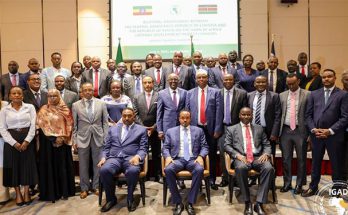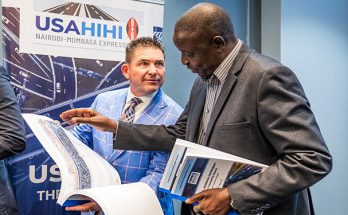 A decision made earlier this month by the Economic Community of West African States (ECOWAS) to agree in principle to Morocco’s request to join the union could allow the kingdom to further expand its trade ties in West Africa, leveraging its strong relations with the EU and a growing industrial base.
A decision made earlier this month by the Economic Community of West African States (ECOWAS) to agree in principle to Morocco’s request to join the union could allow the kingdom to further expand its trade ties in West Africa, leveraging its strong relations with the EU and a growing industrial base.
While none of the members of the 15-nation bloc share a border with Morocco, its accession would allow it to reap the benefits of free trade and movement of people with other ECOWAS states, which have a combined GDP of around $562.2bn, according to IMF data.
Shared understanding
The announcement followed the signing on May 18 of two memoranda of understanding (MoUs) by Morocco and Nigeria, ECOWAS’ largest member by population and GDP.
One of the MoUs sets the stage for a partnership between the Nigerian National Petroleum Corporation and Morocco’s National Office of Hydrocarbons and Mines, whereby the firms will jointly govern, manage and finance a gas pipeline between the two nations.
The Morocco-Nigeria Gas Regional Pipeline is expected to benefit more than 300m people, with the two companies to work on a feasibility study, and front-end engineering and design over the next two years.
The second MoU has laid out the terms for the second stage of a bilateral agreement on what has been dubbed the Fertiliser Initiative.
The first stage of the project saw the reopening of 11 fertiliser blending plants in Morocco, while the second involves the development of a platform for exchanging basic chemical products and reinforcing local distribution channels.
Morocco’s progressive integration with sub-Saharan African markets is symptomatic of the difficulties the Arab Maghreb Union (AMU) has encountered in fomenting concrete progress toward its economic goals, according to Jean AbiNader, executive director of the Moroccan American Trade and Investment Centre.
Limited cooperation between the AMU’s member states since its inception in 1989, he argues, has seen the kingdom shift its efforts towards developing business ties with partners to the south, with which it has signed around 950 bilateral agreements since 2000, according to AbiNader.
Across the water
While Morocco looks to bolster ties on the African continent, its largest trading partner remains the EU, which accounted for 55.7% of trade and 61.3% of exports in 2015. Trade in goods between the two markets has risen steadily in recent years, from €29.3bn in 2014 to €30.6bn in 2015 and €34.6bn last year, according to IMF data.
Of Morocco’s €13.8bn worth of exports to the EU in 2016, machinery and transport equipment made up 40.4%, followed by agricultural products (23%), and textiles and clothing (20.3%).
Investing in industry
Recent developments in Morocco’s automotive, aeronautics and electronics sector also bode well for its trade prospects.
In April last year French automobile manufacturer Renault announced investments in the kingdom totalling $1bn, and in September the country signed an MoU with US aeronautics giant Boeing to develop an industrial zone for the segment.
More recently, Mohammed VI Tangiers Tech City – a planned $10bn industrial and technology city spanning 2000 ha near the city of Tangiers – secured financing from Chinese aviation group Haite in March.
On top of these positive steps, US-based logistics firm UPS inaugurated a 1300-sq-metre warehouse in Casablanca in April, while in March Sogefi – a car-making subsidiary of Italy’s CIR Group – announced it would open its first African factory in Tangiers. Covering 10,000 sq metres and scheduled for completion next year, the facility is expected to cost around €10m to develop and could be extended by 25,000 sq metres by 2021.
Morocco’s success in attracting the interest of international partners and major manufacturers saw credit ratings agency Moody’s upgrade the kingdom’s outlook from stable to positive in February, citing “dynamic export new industries” as a driving force behind an improved “external position reflected in the build-up of foreign exchange reserves”.



